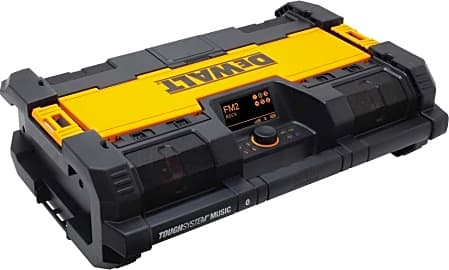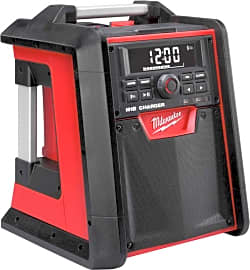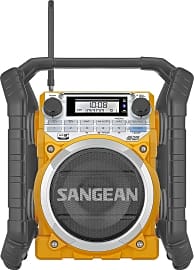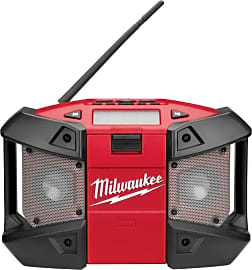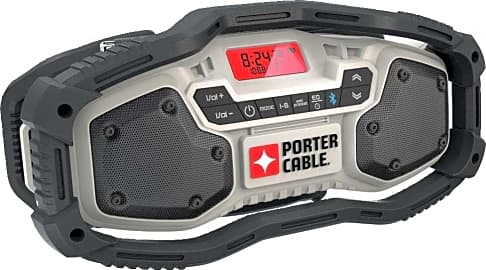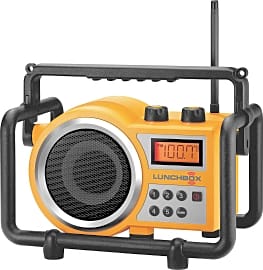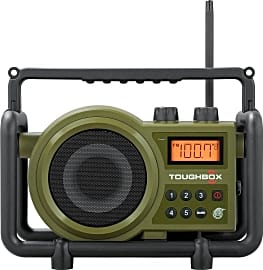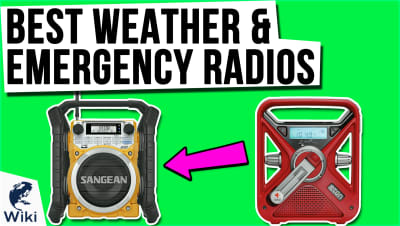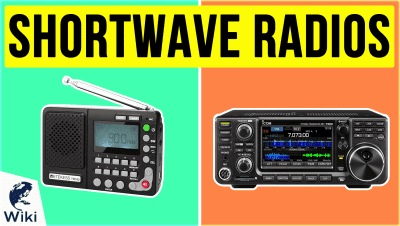The 10 Best Jobsite Radios

This wiki has been updated 44 times since it was first published in July of 2015. Long days on construction worksites can become tedious and boring, and music is a great way to keep you and your workers entertained and the environment upbeat. Typical stereos or speakers usually aren't built to survive around power tools or heavy machinery, so we assembled this list of rugged job-site radios to choose from, designed with durability and portability in mind. When users buy our independently chosen editorial choices, we may earn commissions to help fund the Wiki.
Editor's Notes
March 18, 2021:
It was a straightforward round of updates for us, as all of our existing choices continued to be great picks for this category. We did notice that the DeWalt DCR015 was experiencing some availability issues at the time of this writing, but as the company’s official website has yet to identify this model as being discontinued, we can only assume that said issues are the result of a temporary shortage.
We did give some serious thought to replacing a few models. We liked the look of the Milwaukee 2890-20, and considered swapping out one of our previous picks from the company – the Milwaukee 2590-20 and Milwaukee 2792-20 – but ultimately decided that there would be little to gain by the substitution, as the matter of which is better likely comes down to your personal preference.
Similarly, we toyed with the idea of introducing a rugged little Bluetooth speaker like the Klein Tools AEPJS1 to our list, recognizing that compact units like this can make a convenient alternative to a full-size radio – say if you’re just doing a quick service call, or if you want to avoid making an extra trip up a ladder – but we ultimately determined that an option like this would be better suited to our list of outdoor Bluetooth speakers.
January 24, 2020:
For this update, we removed the Sangean FB-100 Fat box, due to availability issues, and the Ion Job Rocker Plus, since it didn't quite have the durability to survive on a job site. We also added some more variety to our list, beefing it up to ten options to choose from.
We wanted to include more lower-priced options, so we added the PORTER-CABLE PCC771B and the Sangean LB-100. These are both priced quite affordably, but still have the protection and features you want for a job site radio.
The DeWalt, Makita, and Milwaukee radios run on - and can sometimes charge - their own brand's batteries, a useful feature if you already have power tools from one of these brands. It's much more convenient to buy a DeWalt radio if your crew uses mostly DeWalt tools, since you'll always have an abundance of batteries laying around.
We also included a couple of options that did not have Bluetooth capability, like the Milwaukee M12 and DeWalt DCR015. These can be convenient for people who know they're only going to be using the radio for AM/FM stations, or directly connecting their phone via USB. A lot of contractors and foremen don't want to deal with the hassle of their workers constantly pairing and unpairing their devices, and would rather have a more straightforward unit.
A Safe And Productive Worksite
Finally, a productive jobsite is one where the workers are engaged and satisfied.
A worksite is only operating properly when it is operating safely. The speed at which a project is completed is of secondary importance to the safety of those working at and around the site and of anyone that lives, works, commutes, or otherwise comes near the location.
The responsible foreman or general contractor conducts routine worksite analyses, surveying the worksites under their responsibility in compliance with OSHA (the government's Occupational Safety & Health Administration) guidelines.
The recommended steps for ensuring a safe jobsite are first to identify potential hazards, next to develop (or update) controls for these hazards, then to review the inventory of workers, tools, and hardware on the site -- the variables subject to change, in other words -- and finally to conduct routine surveys to ensure the safety status of the site has not changed.
A safe worksite is one that is kept as clean and organized as possible. All walkways, staircases, and ladders should be free of debris, hardware, tools, and other tripping hazards. Cords should be coiled and consolidated when not in use, and secured to floors when they are actively being used for power. Everything from potential respiratory health issues to noise exposure levels needs to be factored into a jobsite safety review.
Another important aspect of worksite safety and efficiency is proper planning and communication among all the people working there. Everyone on a site must know his or her job duties and should have an understanding of what the people around them are doing as well. Good communication prevents accidents by keeping each worker informed when machinery will be moved or operated, when noise levels will spike, when excessive particulate concentration is like in the air, and so forth.
Finally, a productive jobsite is one where the workers are engaged and satisfied. As long as such action doesn't interfere with safety, there's no reason not to allow a team of workers to enjoy open conversation and music that's playing on a good jobsite radio.
Choosing A Jobsite Radios For Music Or Media
If you are looking to provide a jobsite radio for the workers or site you oversee, or if you have approval to bring a radio to this location, you must first consider its overall size. A radio with great acoustics is useless if it's too big to be safely and unobtrusively tucked away or if it's too heavy to be moved around a site where workers move from one place to another.
While many radios designed for use on the jobsite can be battery-powered, many have batteries that won't even last for an entire eight-hour shift.
Next, consider the power supply of any radio you wish to bring on site. While many radios designed for use on the jobsite can be battery-powered, many have batteries that won't even last for an entire eight-hour shift. If you choose a radio to be plugged into an outlet, you don't have to worry about batteries, but you do have to worry about monopolizing an outlet, and you have to consider the frequent power shutoffs that come with construction work. Look for a unit with a long-lasting battery that can also be powered by an AC connection when available.
Thirdly, consider the durability your jobsite radio requires. Some radios are 100% waterproof and can be enjoyed even as rain pours down or as they are splashed with spray from a hose or power washer. Other radios can even stand up to drops and impacts.
Finally, it's time to consider sound quality. There are several jobsite radios on the market that use genuine wooden cabinets that allow for excellent acoustics, and if you and your team value sonic fidelity, these are a fine choice. Other jobsite radios produce rich bass perfect for rhythmic music like hip-hop. Still, others have multiple amplified speakers that can deliver music (and talk radio or podcasts) in all directions, projecting sound through the entire worksite. Just make sure the radio never drowns out voices that need to be heard calling out to inform others of safety hazards.
Choosing A Jobsite Radio As One Of The Tools
Beyond allowing a team of workers to enjoy music or programming, a jobsite radio can be a valuable tool for enhanced safety and communication. Many worksite radios have built-in bluetooth connectivity and can be linked to a phone or walkie-talkie, allowing a foreman or manager to quickly spread information around to his or her team using the radio like a loudspeaker.
The best way to stay safe at work is to stay apprised of any and all issues that might affect your location, and these issues don't necessarily originate from within.
Some jobsite radios have built-in microphones and can be paired with a phone to allow for easy and 100% hands-free, two-way communication. This can be a great way to maintain open channels of communication among various people involved in a project who are not physically in the same location.
Finally, a radio tuned to a weather information or emergency broadcast station can help keep workers safe by keeping them informed of any issues or disruptions caused by rain, wind, fire, or other potential hazards. The best way to stay safe at work is to stay apprised of any and all issues that might affect your location, and these issues don't necessarily originate from within.


